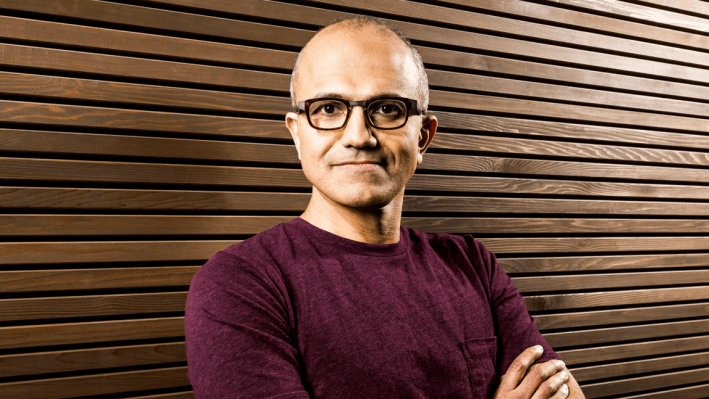Microsoft’s new CEO Satya Nadella said the company is looking beyond the post-PC era that we’re currently in now, which is defined not by consumers and businesses being tied to a single device. Instead, the company is betting on a cloud-first, mobile-first future.
“I think we’re at the very beginning of what I describe as the ‘post-post-PC era,'” Nadella said at the first annual CODE Conference tonight.
The new CEO has only been on the job for about three months, but it’s been a busy three months. In that time, the company has released its version of Office for iPad, closed its $7.2 billion acquisition of Nokia, and introduced a new piece of hardware, the Surface Pro 3, to rave reviews.
Granted, those projects were underway before Nadella took over. But as just the third CEO of the company in nearly four decades, following Bill Gates and Steve Ballmer, he will be tasked with reinventing a company best known for licensing software into one that is built around devices and services.
On that front, he seems to be the perfect choice, having previously served as Microsoft’s EVP of Cloud and Enterprise, and moving the company toward cloud services in products that include Bing, Xbox, and Microsoft Office.
At the conference tonight, Nadella said that the world was entering a more personal computing world, in which the company wouldn’t just build apps for a single device. Instead, consumers are looking for services that work across multiple devices. It’s also looking to use data to create a more personalized experience.
More than ever before, Microsoft is also interested in building its own hardware. That trend was partly by necessity as the post-PC era has begun in earnest and Microsoft can no longer rest on its software licensing laurels.
With Apple’s iOS and Google’s Android emerging as the dominant platforms for mobile development, Microsoft purchased Nokia — which made up 93.5 percent of all Windows Mobile devices anyway — as a way to control its own destiny on a new generation of smartphones and other devices.
Pushing its own hardware is also a way for Microsoft to push an increasing number of cloud-based services. That strategy could perhaps best be seen in the arrival of the Nokia Lumia 930, which leverages Microsoft’s services infrastructure to great effect.
Nadella said that the company got into hardware in part because it needed to create new experiences and new categories that its other hardware partners could build off of. He said that innovation in the PC ecosystem would come from the software layer, hardware layer, and apps, but that Microsoft would have to be active in all those places to help drive innovation.
“Hardware is a means to an end, not an end in and of itself,” Nadella said. “I want to use hardware to create new categories.”
One of the more surprising things that have happened in Nadella’s early reign was the release of the Microsoft Office app on the iPad, before a touch-based version of the app was available on its own Windows devices.
“The intent is for us to make sure that our services are available on all the devices… We have to make sure our software runs on all of them,” Nadella said. But, he added, “We wanted to make sure we had a touch-first app on the platform that has the most share. Frankly, I didn’t want us to hold back because the idea of getting it on our platforms wasn’t important anymore.”
It might seem like a departure for Microsoft, but for Nadella, as he seeks to remake Microsoft, the goal is to help the company ensure its survival in a so-called “post post-PC world.”
